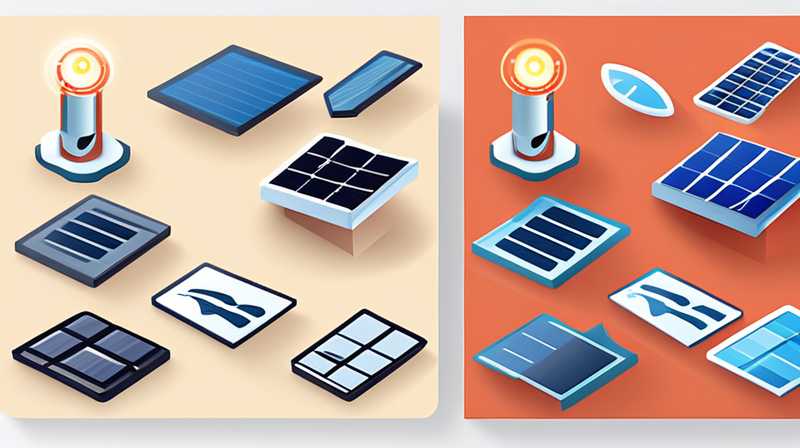
Choosing solar energy machinery involves multiple factors that require careful consideration to ensure that you select equipment that meets your energy needs, budget constraints, and technological preferences. 1. Assess your energy requirements, 2. Research available machinery options, 3. Evaluate performance and efficiency, 4. Consider installation and maintenance needs. Among these, assessing energy requirements is particularly critical; understanding how much energy you are likely to need will dictate the size and type of machinery required. In this detailed examination, we will delve deeper into each of these aspects.
1. UNDERSTANDING ENERGY NEEDS
The very first step in choosing solar energy machinery is to comprehensively understand your energy demands. This involves analyzing your current electricity consumption patterns and forecasting future energy needs based on potential changes in lifestyle, home renovation, or technological integration.
Methods for accurately calculating energy requirements include monitoring your energy bills for at least a year to identify seasonal variations and peak usage times. Utilizing energy audit tools can also provide insights into possible energy conservation strategies. It’s essential to look into the number of devices that need to be powered, their energy ratings, and how long they are used daily. Once you have a clear picture, you’ll be better prepared to choose the right solar machinery that will not only meet but anticipate your future energy demands.
2. RESEARCHING MACHINERY TYPES
Solar energy machinery is not one-size-fits-all; there are various types you might consider. The most common types include photovoltaic (PV) panels, solar inverters, batteries for energy storage, and solar thermal systems. Each type serves a different purpose and offers unique benefits.
Photovoltaic panels are primarily used to convert sunlight into electricity. Inverters play a critical role in this process, converting direct current (DC) generated by the panels into alternating current (AC) used by home appliances. Understanding the technologies behind each type will help in narrowing down options. For instance, if you live in an area that experiences frequent power outages, investing in a robust battery storage system might be a wise choice.
3. EVALUATING PERFORMANCE AND EFFICIENCY
When considering various machinery options, evaluating performance and efficiency is essential. The efficiency of solar panels, for instance, indicates how much sunlight can be converted into usable electricity. Higher efficiency panels can yield more energy in less space, making them ideal for areas where roof space may be limited.
It’s also vital to look at the performance ratings of your potential machinery. These ratings give a clear indication of energy production capability under standard testing conditions, as well as their expected performance in real-world conditions reflective of weather variations. A thorough examination of warranties is equally critical, as many manufacturers offer performance guarantees, which can offer peace of mind regarding the longevity and reliability of the machinery chosen.
4. INSTALLATION AND MAINTENANCE
Choosing machinery also entails understanding the intricacies of installation and ongoing maintenance. Proper installation is crucial for optimal energy production and longevity of your solar energy system. Some machinery may require professional installation due to complex configurations, while others may be more DIY-friendly.
Maintenance requirements can vary dramatically between systems. Regular cleaning of solar panels is essential to ensure they operate at peak efficiency. Some systems may require annual checks to assess their condition. Understanding these aspects can help you plan out both your initial investment and your long-term costs.
FAQs
HOW DO I DETERMINE MY ENERGY USAGE?
One effective way to determine energy usage involves examining utility bills over a year to gauge daily, weekly, and seasonal consumption patterns. Utilize energy monitoring devices that directly measure the consumption of appliances or use online energy calculators. These tools can provide a comprehensive overview of your energy needs.
WHAT TYPES OF SOLAR PANELS ARE AVAILABLE?
There are primarily three types of solar panels: monocrystalline, polycrystalline, and thin-film. Monocrystalline panels are made from single-crystal silicon, offering higher efficiency and lifespan. Polycrystalline panels are created from multiple silicon crystals, typically providing a more cost-effective solution but with slightly lower efficiency. Thin-film panels offer flexibility and lightweight construction, suited for diverse applications, but might require more space for the same energy output.
HOW MUCH MAINTENANCE DO SOLAR ENERGY SYSTEMS REQUIRE?
Maintenance for solar energy systems generally includes regular cleaning to remove dust, leaves, or debris, which can affect performance. While major components, such as solar panels, have a long lifespan, periodic checks on inverters and storage batteries are advisable. Routine inspections can help in troubleshooting and prolonging the efficiency of the entire system.
Selecting solar energy machinery warrants meticulous consideration of numerous factors. Analyzing energy requirements provides a strong foundation, while exploring various machinery types enhances informed decision-making. Evaluating performance and efficiency guarantees you acquire reliable and effective equipment, and considering installation and maintenance leads to a seamless transition to solar energy. By thoughtfully navigating these categories, individuals and businesses can maximize their investment in solar energy, paving the way towards sustainable and economical energy solutions. Ultimately, the right solar machinery will support both immediate energy needs and long-term objectives of energy independence and environmental stewardship.
Original article by NenPower, If reposted, please credit the source: https://nenpower.com/blog/how-to-choose-solar-energy-machinery/


